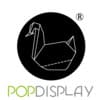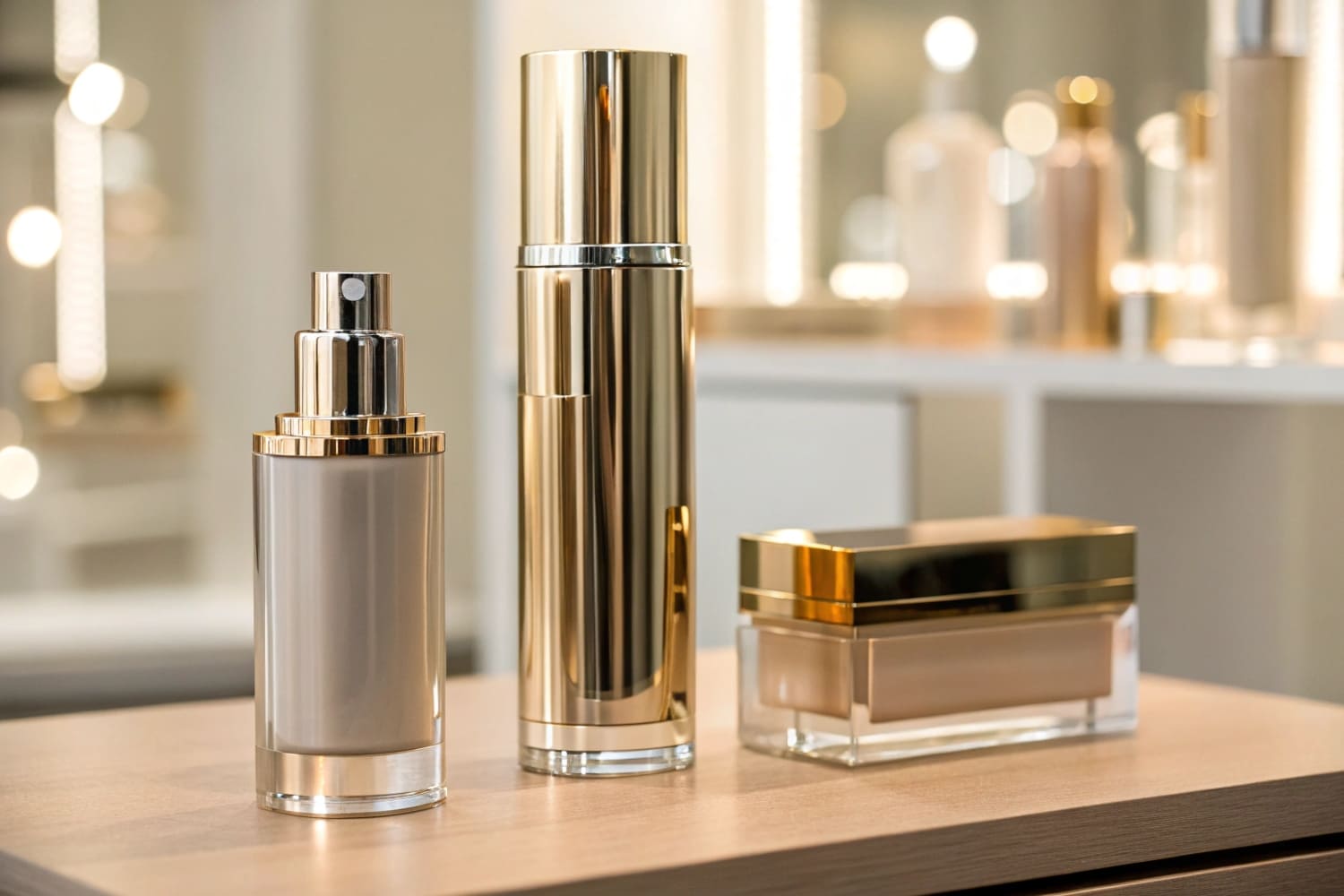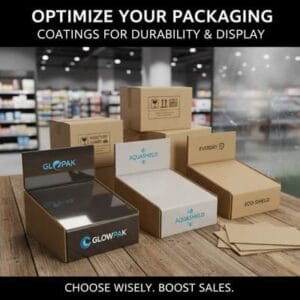I see crowded shelves. I feel tight timelines. I know packaging can make or break a launch. I also run a cardboard display factory. I have felt both risk and reward.
The best packaging for cosmetics balances product safety, brand impact, and sustainability; choose materials that protect formulas, formats that match use, finishes that sell on shelf, and designs that cut waste and cost.
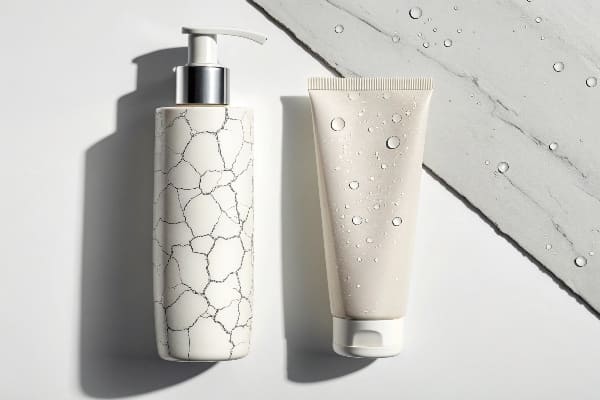
I will show real options first. Then I will compare plastics. Then I will cover transport. Then I will end with four simple rules that I use in my factory and in client work.
What are the packaging options for cosmetics?
Cosmetic lines grow fast. Choices grow faster. Teams face cost, speed, and quality pressure. I have seen buyers stuck between many formats and no clear plan. I was there once, during a holiday rush. We fixed it with a clear map of options.
Primary options include bottles, jars, tubes, pumps, droppers, sticks, compacts, and sachets; secondary options include folding cartons, sleeves, and sets; display options include PDQ trays, floor displays, and pallet displays for retail impact and e-commerce bundling.
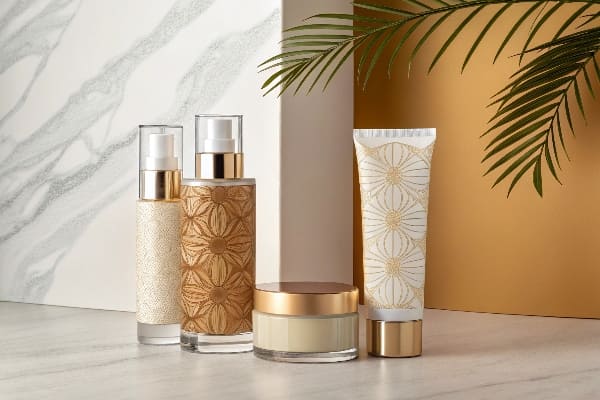
Primary, Secondary, and Display: how they work together
I keep the structure simple. Primary holds the formula1. Secondary carries brand and information. Display wins the shopper’s eye. In beauty, the last meter is the fight. I make cardboard displays to boost that moment. Floor displays drive impulse. PDQ trays help fast moves in club stores2. Folding cartons protect and tell the story3. Below is a quick map I use with clients, from indie serums to mass mascara.
| Layer | Typical Formats | Best For | Notes |
|---|---|---|---|
| Primary | Bottle, Jar, Tube, Pump, Dropper, Stick, Compact, Sachet | Formula safety and dosing | Match viscosity, light, oxygen needs |
| Secondary | Folding Carton, Sleeve, Gift Box, Kit | Branding, compliance, shelf fit | Use FSC paperboard and water-based inks |
| Display | PDQ Tray, Shelf Tray, Floor Display, Pallet Display | Retail visibility, promotions | Flat-pack for low freight; quick setup |
Materials that fit formulas
Thin liquids need droppers or pumps with barriers. Thick creams like wide-mouth jars or airless pumps. Powders love compacts with sifters. Single-use masks work in sachets to control dose. Oil-heavy formulas need seals and liners. SPF and actives often need light barriers. I plan print and coatings to support these needs, not fight them.
Where my display work plugs in
I supply cardboard displays that fit these packs. North America buys stable volumes. APAC grows fast and watches cost and speed. Europe pushes greener choices. I use recycled board, water-based inks4, and flat-pack designs. I run drop tests and load tests on every design. I also offer quick digital print for small runs. This saves launches with short lead time and tight budgets.
What is the best plastic for cosmetics?
Many brands ask one hard question. They want one plastic that does all jobs. There is no single winner. Each resin solves different risks. I choose by formula, barrier, feel, and end-of-life.
Use PET for clarity and recyclability, PP for hinges and low-cost caps, PE for flexible tubes, and acrylic (PMMA) for premium look; add airless systems or multilayers only when formulas need extra barrier to light, oxygen, or contamination.
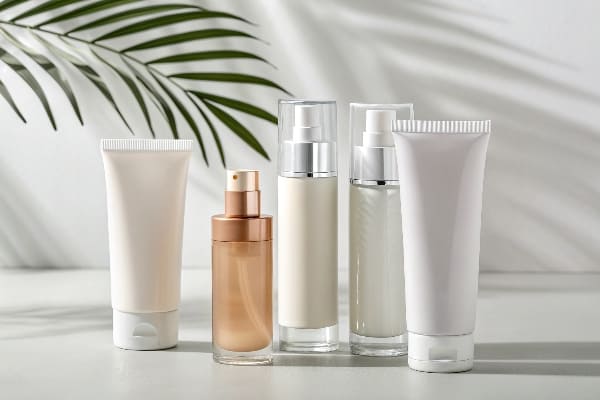
Quick resin guide I give to buyers
I keep the trade-offs clear and short. Teams print this chart and stick it to the wall during sampling.
| Plastic | Pros | Cons | Typical Uses |
|---|---|---|---|
| PET | Clear, tough, widely recycled | Lower chemical resistance vs glass | Bottles, jars, outer walls |
| PP | Light, fatigue-resistant hinges, low cost | Less clear, can warp with heat | Caps, jars, inner parts, airless pistons |
| HDPE/LDPE | Chemically resistant, squeezable | Opaque or translucent, scuffs | Tubes, squeeze bottles |
| PMMA (Acrylic) | High gloss, premium look | Brittle, not for aggressive formulas | Jars, outer shells |
| SAN/AS | Clear, hard | Stress cracking risk | Compacts, jars |
| PCR resins5 | Lower footprint story | Color variation, supply swings | Bottles, caps (with testing) |
Barrier and system choices6
Barriers save active formulas. Airless pumps reduce oxygen and touch. Co-ex tubes keep oils and acids stable. UV-block masterbatch or coated sleeves protect light-sensitive actives. I only add barriers when tests prove a need. Extra layers raise cost and may hurt recycling. I run stability checks7 with the client’s lab or a partner lab. Small pilots prevent big recalls.
How displays connect to plastics
Shiny plastic sells8, but the shopper must see it. My cardboard displays lift facings to eye level. We print clear claims and shade blocks on headers. We use modular trays to fit PET bottles, PE tubes, and PP compacts in one bay. I once saved a launch by switching a heavy acrylic jar to PET outer + PP inner, then updated the tray die-cut. The set looked premium but cut weight and freight by a lot.
What containers are used to transport cosmetics?
Units look great on shelf. They must also survive travel. Many teams focus on the bottle and forget transit. I do not. I start at the pallet and work backward to the shelf.
Use corrugated shipper boxes with dividers, molded pulp or honeycomb guards, corner posts, and pallets with stretch wrap; design flat-pack display trays or PDQ units to double as transport and quick setup at retail.
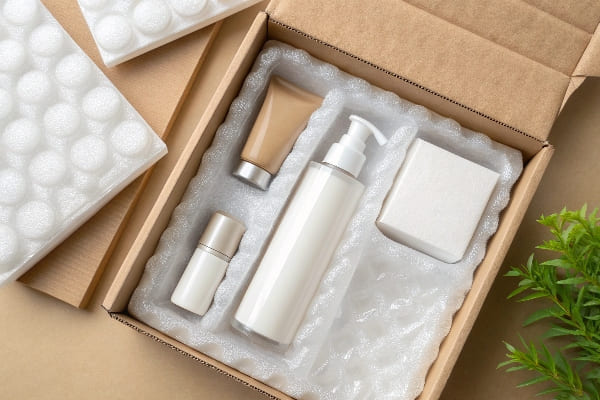
Transit system I build for launches
I build a stack that survives drops, humidity, and fast handling. I use double-wall corrugated9 for heavy glass or sets. I add die-cut inserts to stop scuff and crush. I choose pallet patterns that lock. I spec stretch wrap and edge boards. For club channels, I design PDQ trays that ship filled. Staff cuts the top and slides the tray onto shelf. Set time drops from hours to minutes.
| Transit Element | Material | Purpose | My Tip |
|---|---|---|---|
| Master Carton | Corrugated board | Protect units in bulk | Use printed orientation marks |
| Inner Pack | Dividers, pulp, foam-free pads | Prevent rub and breakage | Favor paper-based, recycle-ready |
| PDQ/Tray | Folding boxboard + E-flute | Ship and display hybrid | Flat-pack to reduce freight volume |
| Palletization | Wood or paper pallet | Stable base for stacks | Match retailer pallet spec early |
Testing and regional notes
North America shows stable retail needs. APAC ships long distances and adds humidity risk. Europe demands greener cushions and clear recycle marks. I run ISTA-style drop tests10. I test edge crush of boards. I test shelf pull to see if displays tear under rush traffic. Digital print helps pilots. We learn fast, then we scale. During one rush job for a hunting brand, we moved from foam to molded pulp. Breakage fell by half. Retailers noticed the clean look and the easy setup.
What are the four rules of packaging?
Teams like simple rules. I do too. My crew uses four rules on every cosmetic brief. These rules guide design, testing, and buying. They hold under pressure.
Protect the formula, tell the story, cut waste, and speed setup; if a choice fails one rule, fix it fast or change the design.
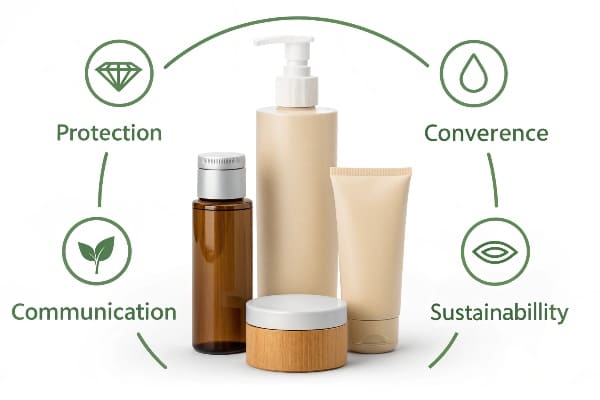
Rule 1: Protect the formula
If the product spoils, all else fails. Match resin and barrier to actives. Use airless when needed. Seal well. Test under heat and light. Never skip small pilots.
Rule 2: Tell the story
Shoppers decide fast. Colors must match proofs. Print must be sharp. Claims must be clear and legal. Displays raise visibility. I align pack, carton, and display so the set looks like one family.
Rule 3: Cut waste
Use recycled board and water-based inks11. Remove plastic windows if not needed. Keep dielines simple. Use flat-pack displays. Lighter packs save freight and cut carbon. I track offcuts and reduce them job by job.
Rule 4: Speed setup
Stores move fast. Make trays that pop and lock. Add QR codes for quick assembly videos. Use common footprints. I build modular displays12 so stores can restock fast. Speed wins promotions and reduces labor cost.
| Rule | What I Check | Quick Win |
|---|---|---|
| Protect | Stability, barrier, seals | Airless for sensitive serums |
| Story | Color accuracy, finish | Standard brand color bars on proofs |
| Waste | Material and freight | Flat-pack + fewer inserts |
| Setup | Time and tools | Auto-lock trays with clear labels |
Conclusion
Choose formats that fit formulas, materials that protect and recycle, transit that survives, and displays that sell. Keep the four rules. Test small, print smart, and move fast.
Understanding primary packaging is crucial for ensuring product safety and effective dosing, making it a key area for brands. ↩
PDQ trays are designed for quick product turnover, enhancing visibility and impulse buying in retail environments. ↩
Folding cartons not only protect products but also convey brand stories, making them essential for marketing. ↩
Exploring the use of recycled materials in packaging can reveal sustainable practices that appeal to eco-conscious consumers. ↩
Learn about PCR resins to discover their environmental benefits and how they can impact your product’s sustainability. ↩
Explore this link to understand how barriers can enhance product stability and protect active ingredients. ↩
Understanding stability checks can help ensure your product maintains quality throughout its shelf life. ↩
Find out why shiny plastic is effective in retail and how it can influence consumer purchasing decisions. ↩
Explore this link to understand how double-wall corrugated packaging enhances protection and durability for your products. ↩
Learn about ISTA-style drop testing to ensure your packaging meets industry standards for durability and performance. ↩
Explore this link to understand how sustainable materials can enhance your packaging strategy and reduce environmental impact. ↩
Discover how modular displays can streamline restocking and enhance promotional effectiveness in retail environments. ↩
